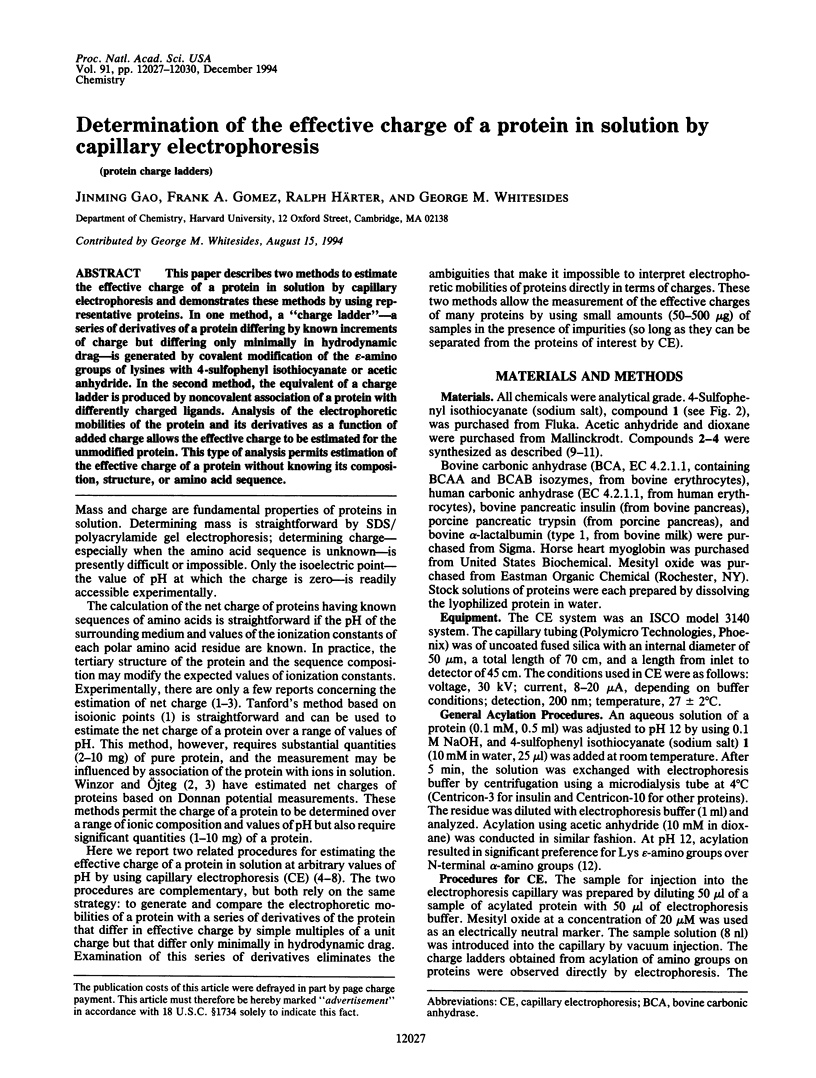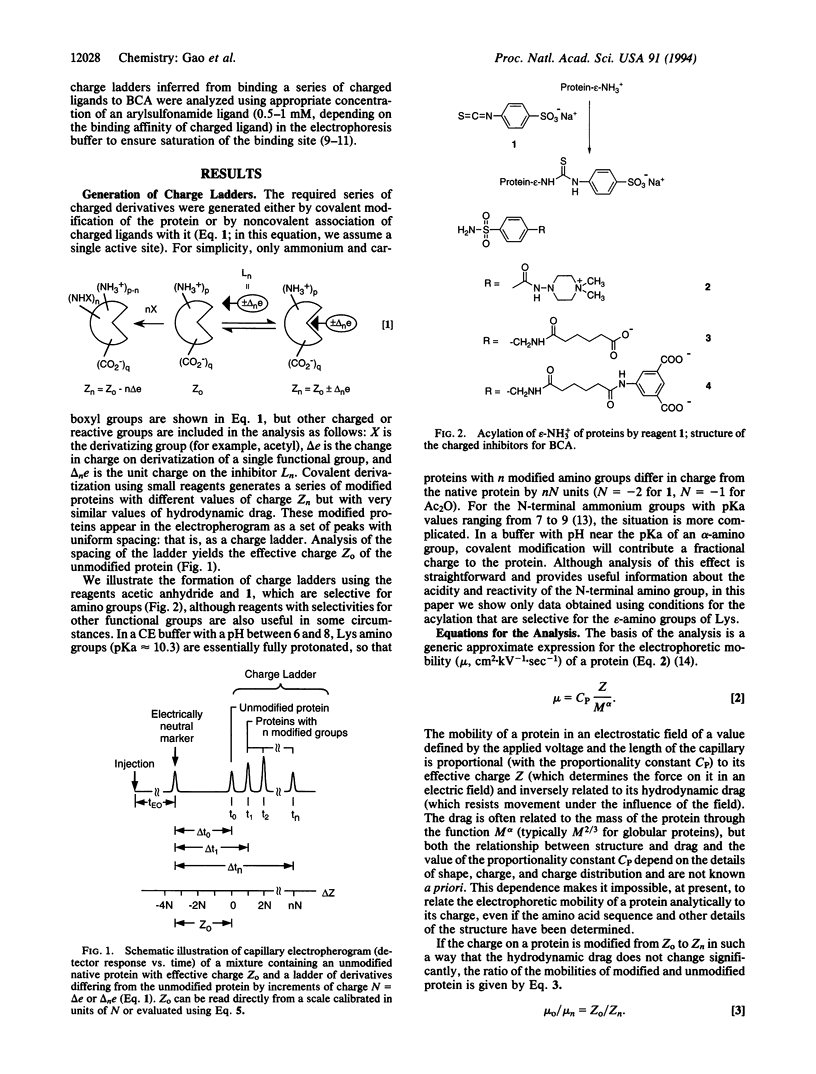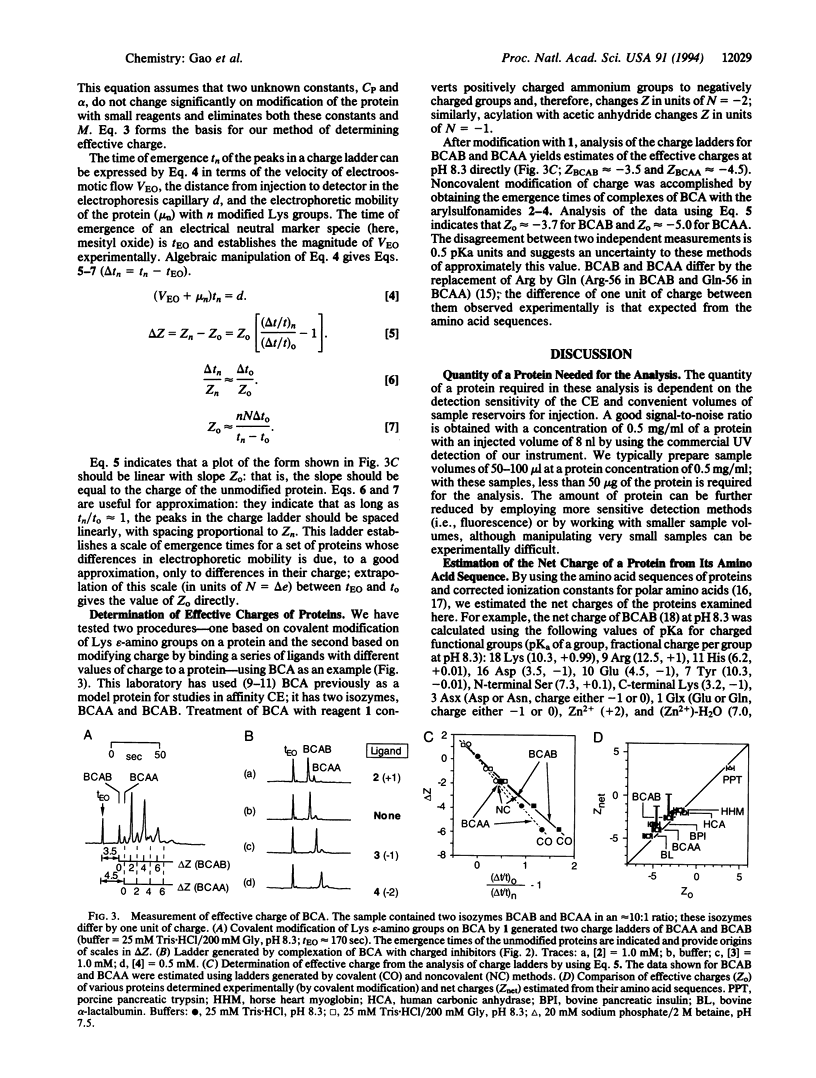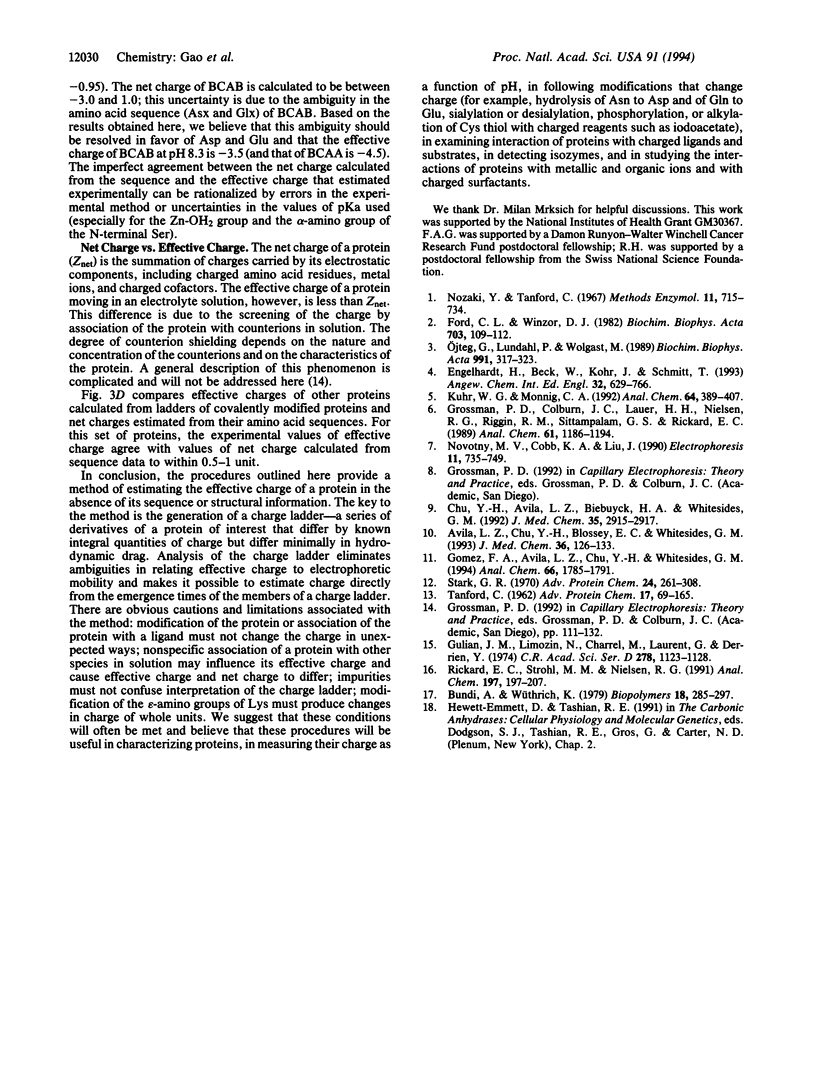Abstract
This paper describes two methods to estimate the effective charge of a protein in solution by capillary electrophoresis and demonstrates these methods by using representative proteins. In one method, a "charge ladder"--a series of derivatives of a protein differing by known increments of charge but differing only minimally in hydrodynamic drag--is generated by covalent modification of the epsilon-amino groups of lysines with 4-sulfophenyl isothiocyanate or acetic anhydride. In the second method, the equivalent of a charge ladder is produced by noncovalent association of a protein with differently charged ligands. Analysis of the electrophoretic mobilities of the protein and its derivatives as a function of added charge allows the effective charge to be estimated for the unmodified protein. This type of analysis permits estimation of the effective charge of a protein without knowing its composition, structure, or amino acid sequence.
Full text
PDF



Selected References
These references are in PubMed. This may not be the complete list of references from this article.
- Avila L. Z., Chu Y. H., Blossey E. C., Whitesides G. M. Use of affinity capillary electrophoresis to determine kinetic and equilibrium constants for binding of arylsulfonamides to bovine carbonic anhydrase. J Med Chem. 1993 Jan 8;36(1):126–133. doi: 10.1021/jm00053a016. [DOI] [PubMed] [Google Scholar]
- Chu Y. H., Avila L. Z., Biebuyck H. A., Whitesides G. M. Use of affinity capillary electrophoresis to measure binding constants of ligands to proteins. J Med Chem. 1992 Jul 24;35(15):2915–2917. doi: 10.1021/jm00093a027. [DOI] [PubMed] [Google Scholar]
- Gomez F. A., Avila L. Z., Chu Y. H., Whitesides G. M. Determination of binding constants of ligands to proteins by affinity capillary electrophoresis: compensation for electroosmotic flow. Anal Chem. 1994 Jun 1;66(11):1785–1791. doi: 10.1021/ac00083a003. [DOI] [PubMed] [Google Scholar]
- Grossman P. D., Colburn J. C., Lauer H. H., Nielsen R. G., Riggin R. M., Sittampalam G. S., Rickard E. C. Application of free-solution capillary electrophoresis to the analytical scale separation of proteins and peptides. Anal Chem. 1989 Jun 1;61(11):1186–1194. doi: 10.1021/ac00186a003. [DOI] [PubMed] [Google Scholar]
- Gulian J. M., Limozin N., Charrel M., Laurent G., Derrien Y. Les deux iso-enzymes de l'anhydrase carbonique érythrocytaire bovine different par une substitution Arg leads to Gln en position 56. C R Acad Sci Hebd Seances Acad Sci D. 1974 Feb 18;278(8):1123–1126. [PubMed] [Google Scholar]
- Novotny M. V., Cobb K. A., Liu J. P. Recent advances in capillary electrophoresis of proteins, peptides and amino acids. Electrophoresis. 1990 Sep;11(9):735–749. doi: 10.1002/elps.1150110911. [DOI] [PubMed] [Google Scholar]
- Ojteg G., Lundahl P., Wolgast M. The net electric charge of proteins. A comparison of determinations by Donnan potential measurements and by gel electrophoresis. Biochim Biophys Acta. 1989 May 31;991(2):317–323. doi: 10.1016/0304-4165(89)90122-0. [DOI] [PubMed] [Google Scholar]
- Rickard E. C., Strohl M. M., Nielsen R. G. Correlation of electrophoretic mobilities from capillary electrophoresis with physicochemical properties of proteins and peptides. Anal Biochem. 1991 Aug 15;197(1):197–207. doi: 10.1016/0003-2697(91)90379-8. [DOI] [PubMed] [Google Scholar]
- Stark G. R. Recent developments in chemical modification and sequential degradation of proteins. Adv Protein Chem. 1970;24:261–308. doi: 10.1016/s0065-3233(08)60243-0. [DOI] [PubMed] [Google Scholar]


